Introducing LCE’s Asset Management System Framework
Background
The discipline of physical asset management is currently undergoing substantial change. Several key, interrelated catalysts are driving these changes:
- As companies continue to improve their operations there is an emerging realization that asset reliability is critical to successful lean and operational excellence initiatives.
- Government regulations, especially with regard to safety and mechanical integrity, are mandating that companies significantly upgrade their maintenance and reliability capabilities.
- Companies are more sophisticated and knowledgeable regarding lifecycle asset management and the enormous benefits resulting from establishing processes that efficiently manage an asset from conception through disposal.
- The ISO 55000 Asset Management standard provides a framework for the principles and benefits of establishing an asset management system.
These catalysts share the common objectives of achieving value from assets and the optimization of cost, risk and performance across the lifecycle of the asset.
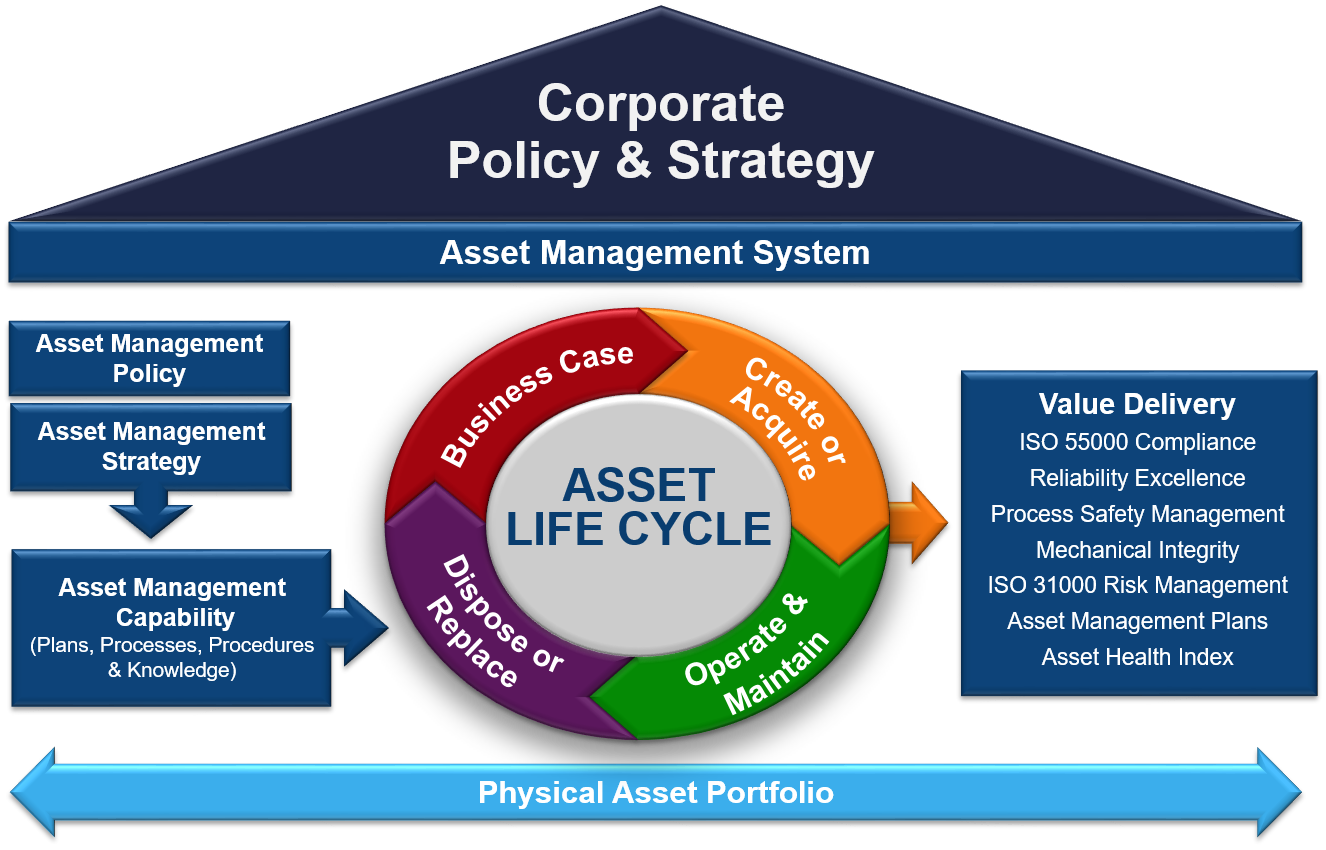
In response to changing industry dynamics, Life Cycle Engineering has developed an Asset Management System Framework that demonstrates the linkages between the important elements of an asset management system and key outputs. A properly implemented asset management system is a prerequisite for delivering the value necessary for adapting to the various changes to physical asset management that are discussed above.
Elements of the Asset Management System Framework
The Asset Management System Framework reflects and incorporates the key features of the ISO 55000 management system for asset management standard. The Leadership, Policy and Strategy elements, positioned at the top, are related to the broader application of running the entire company, as well as to the specific reference to the ISO 55000 standard’s common management system elements. They are interchangeable with regard to their importance.
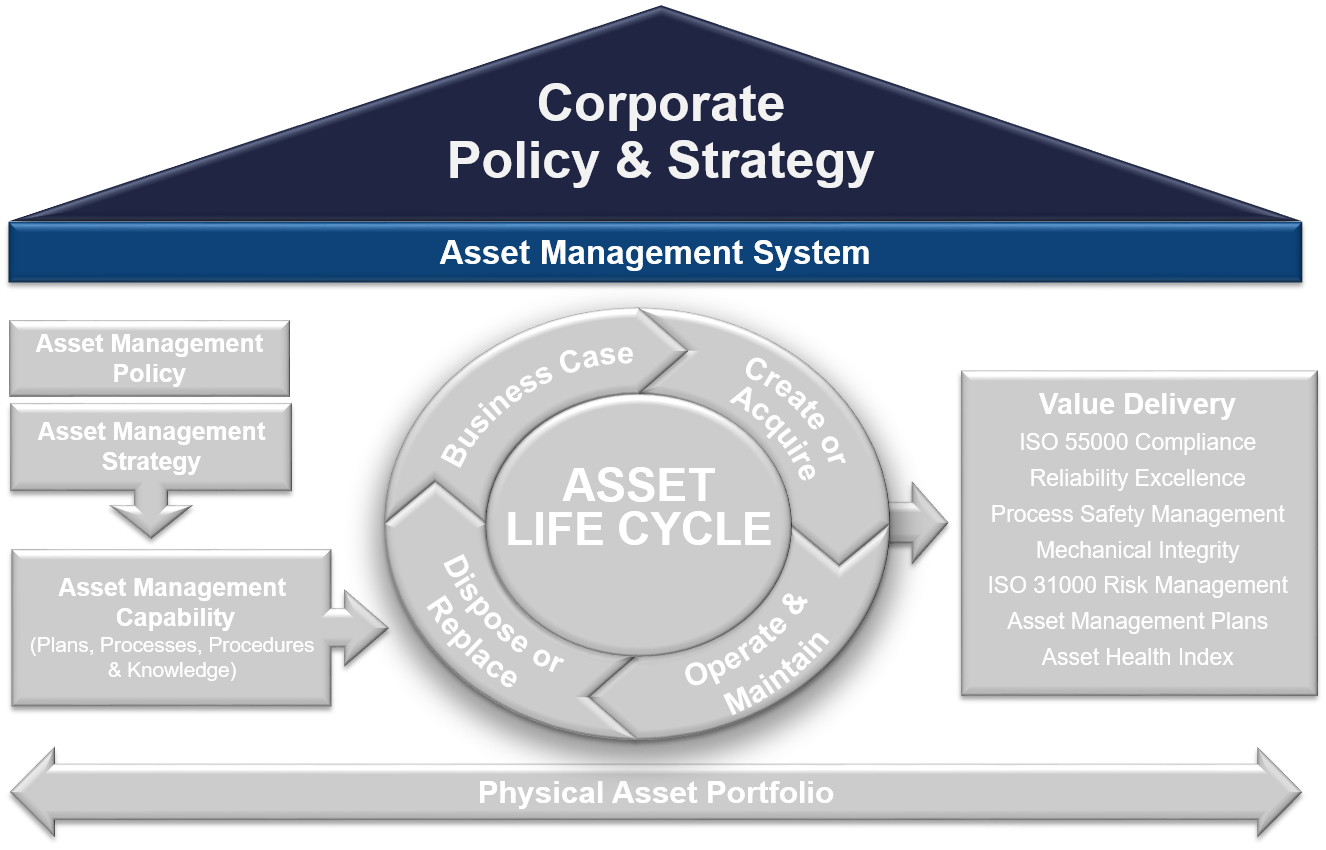
From an ISO 55000 perspective, leadership, policy and strategy are overarching elements necessary for establishing governing principles that describe how asset management will contribute to meeting organizational goals (policy) while defining the strategies necessary to achieve the required outcomes of its asset management activities (the strategic asset management plan or SAMP). Policy and strategy must both be cascaded throughout the organization with clear connectivity between strategy, objectives and results. This “line of sight” within the management system ensures that the organization not only gets results, but gets planned results (leadership).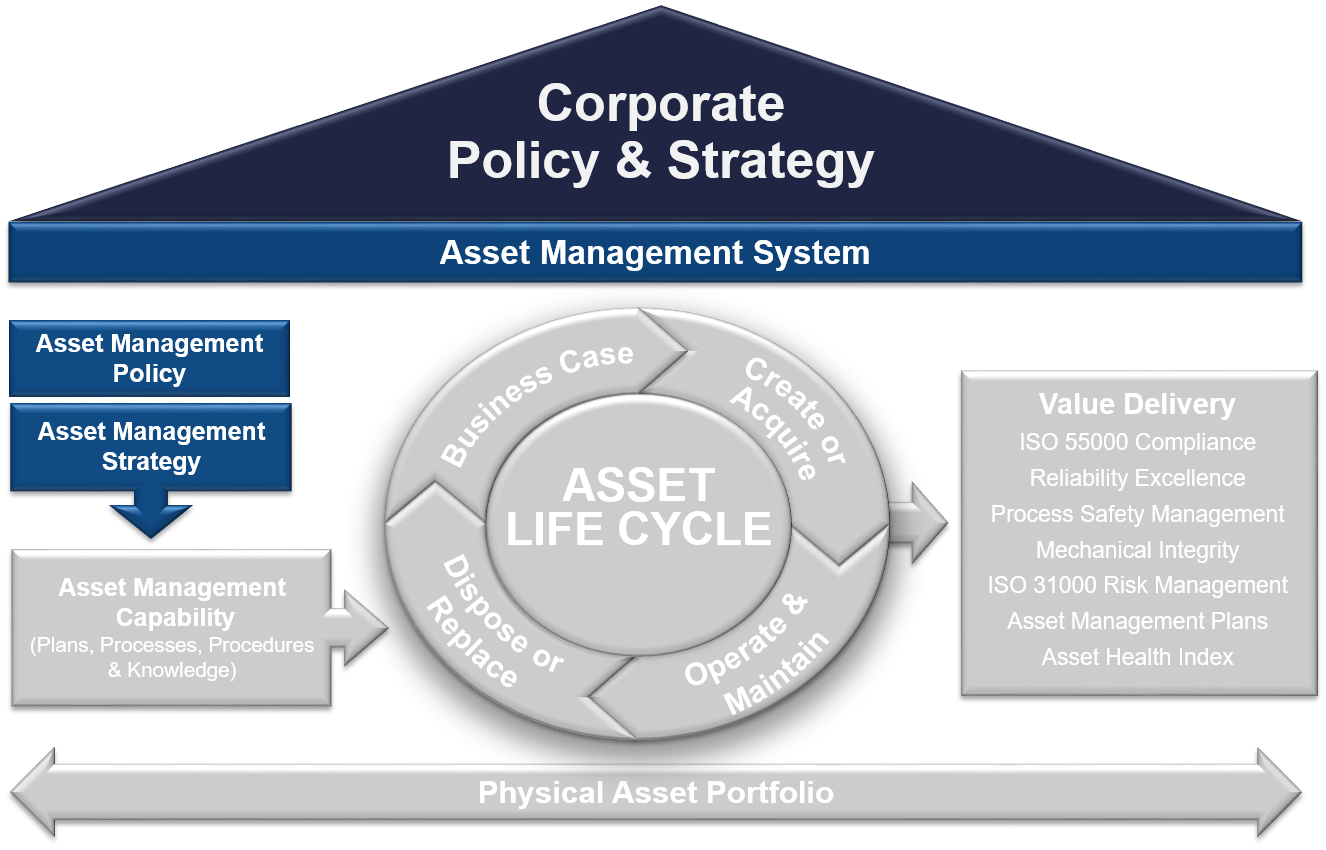
As the asset management strategy takes shape the organization must develop objectives. Asset management objectives transform outcomes into activities and provide an essential link back to the overall organization’s objectives. Asset management objectives are performance-based and often serve as KPIs designed utilizing a SMART-based goal-setting approach.
The organizational pledge to establishing an asset management system is largely defined, shaped and communicated through the various activities related to leadership commitment to the development of governing policy, strategy and asset management objectives. It is the next phase in the model that really begins to define the “how” behind implementing the system. The value of an asset management system will be defined by the effectiveness of its asset management capabilities as defined by the plans, processes, procedures and organizational knowledge. The requirement for such capabilities are identified in ISO 550001, management system element 8.1, Operational Planning and control,: “The organization should establish operational planning and control processes in order to support the effective delivery of the activities contained within the asset management plans.”
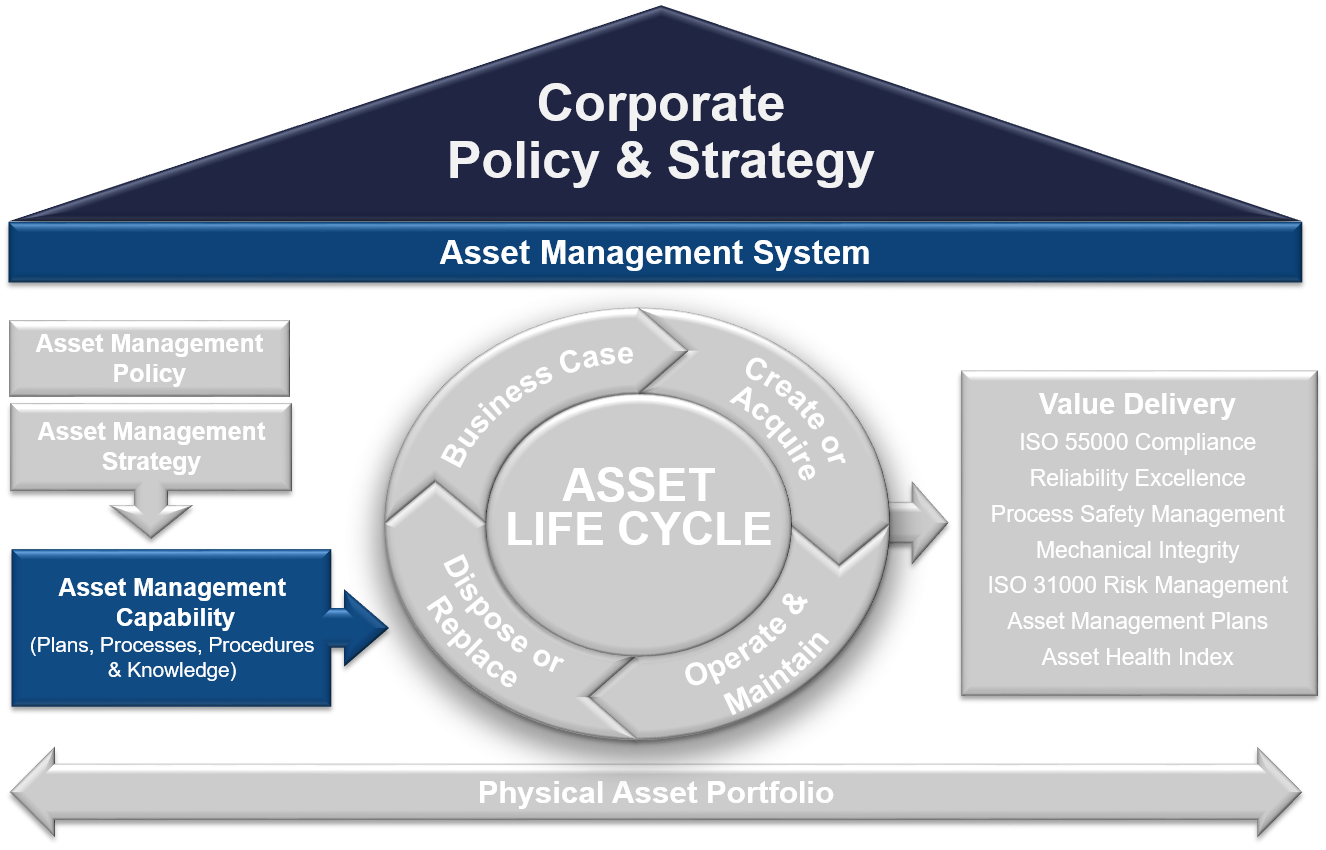
How the Asset Management System Framework Delivers Value
LCE’s Asset Management System Framework organizes these operational planning and control processes largely through the stages of the asset lifecycle. LCE’s implementation methodology comprises more than 90 key processes and eight critical knowledge domains that span the entire asset lifecycle. When fully implemented, the resulting asset management capabilities define a best-in-class asset management system designed to achieve maximum, risk-based value from your physical asset portfolio. Numerous outcomes can define the value resulting from implementing a fully integrated asset management system. Depending upon your company’s strategy and business objectives, the LCE framework will support a holistic Reliability Excellence® transformation that can result in a functioning, compliant asset management system. For companies where compliance is not a strategic objective, the framework can guide effective asset management and yield improved performance and business results.
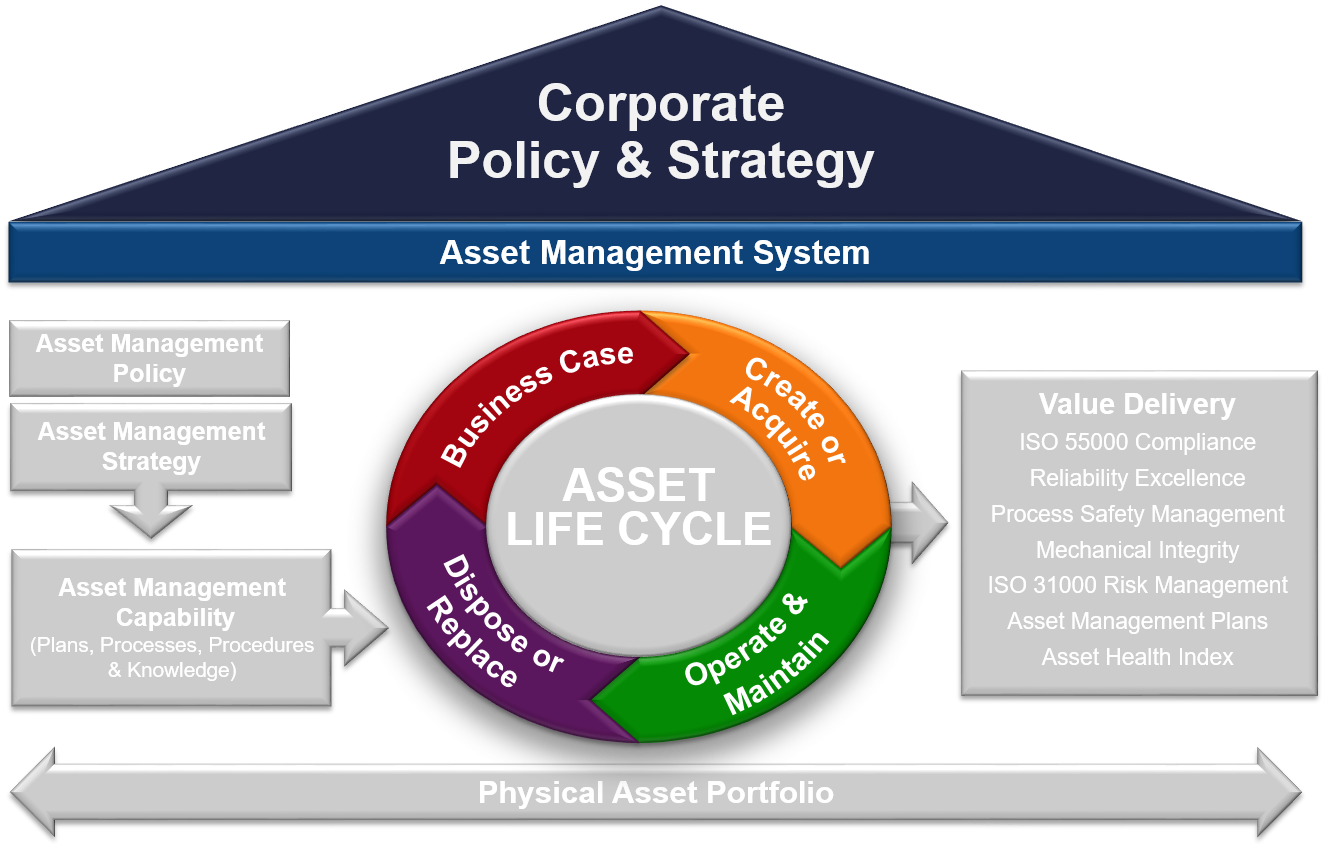
Other outcomes of developing best-in-class asset management capabilities are more tactical by design and targeted to very specific regulatory or performance limiting factors. These deliverables can range from a simple, specific asset management plan to the more complex implementation of systems for managing a company’s mechanical integrity program or ensuring compliance with process safety management regulations. Both scalable and flexible, LCE’s Asset Management System Framework is designed as a starting point for developing company-specific solutions to a wide array of asset management challenges.
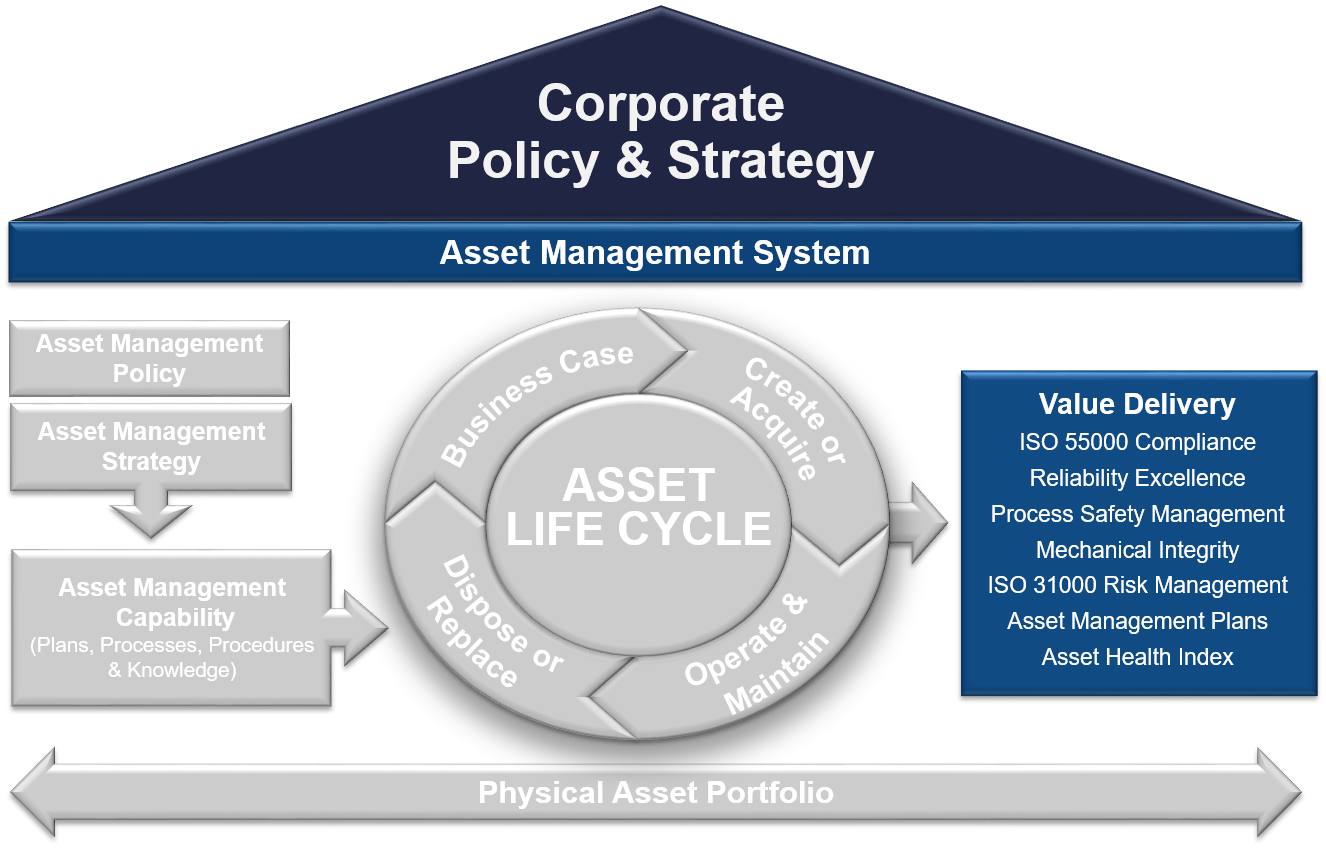
© Life Cycle Engineering, Inc.

For More Information
843.744.7110 | info@LCE.com
